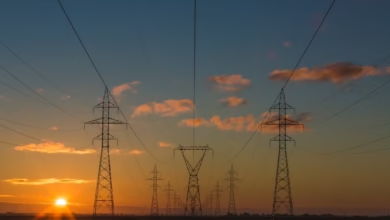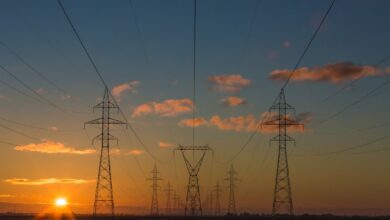Navigating the Future of Offshore Energy: Innovations, Balancing Fossil Fuels and Green Energy in a Climate-Conscious World

As the world grapples with the pressing challenges of climate change and the urgent need for sustainable energy solutions, offshore energy production has emerged as a pivotal player in the global energy landscape. From expansive wind farms to traditional oil rigs, the sea is becoming a critical frontier for both renewable energy and fossil fuels. This article explores the future of offshore energy, highlighting the shift towards renewable energy and the pivotal role it plays in addressing climate change. We will delve into the delicate balance between fossil fuels and green energy within energy markets, examine innovations such as energy storage and smart grids that are reshaping the energy transition, and discuss the broader implications for energy policy and security. With ongoing advancements in technologies like hydrogen energy, carbon capture, and energy efficiency, the offshore sector is poised to significantly influence global energy trends and investments. Join us as we navigate the complex waters of offshore energy and its potential to redefine our energy economics for a sustainable future.
- 1. The Future of Offshore Energy: Navigating the Shift Toward Renewable Energy and Climate Change Solutions
- 2. Wind Farms and Oil Rigs: Balancing Fossil Fuels and Green Energy in Energy Markets
- 3. Innovations in Offshore Energy: Exploring Energy Storage, Smart Grids, and the Energy Transition
1. The Future of Offshore Energy: Navigating the Shift Toward Renewable Energy and Climate Change Solutions
The future of offshore energy is poised for a significant transformation as the world navigates the shift toward renewable energy sources. This transition is not only a response to the pressing need for climate change solutions but also a strategic move to enhance energy security and economic resilience in the face of dwindling fossil fuels. Offshore wind farms, in particular, are emerging as a cornerstone of this energy transition, promising vast potential for green energy generation.
As global energy trends indicate a growing commitment to reducing carbon emissions, investments in offshore energy technologies are on the rise. This shift is supported by favorable energy policy frameworks that incentivize the development of renewable energy infrastructures, including wind energy and solar power installations at sea. These advancements are complemented by innovations in energy storage solutions, which are critical for managing the intermittent nature of renewable energy sources.
The integration of smart grids is another key component of the future offshore energy landscape. These advanced systems enhance energy efficiency by optimizing energy distribution and consumption, thereby reducing waste and improving overall energy economics. Furthermore, the adoption of distributed energy models allows for more localized energy generation, promoting resilience in energy markets and minimizing reliance on energy imports.
In addition to wind energy, other offshore solutions like hydropower, thermal energy, and emerging hydrogen energy technologies are gaining traction. These diversified energy production methods contribute to a more robust energy portfolio and facilitate a comprehensive energy transition away from fossil fuels. The exploration of bioenergy and carbon capture technologies also plays a vital role in mitigating climate change impacts while providing sustainable energy pathways.
As countries strive to lead in energy exports, investments in offshore energy infrastructure will be essential. This includes not only the construction of oil rigs and wind farms but also the R&D necessary to drive innovations in energy transportation and efficiency. The interplay between offshore energy initiatives and electric vehicles further underscores the potential for a greener future, as these technologies work in synergy to reduce reliance on traditional energy sources.
Ultimately, the future of offshore energy will hinge on the collaborative efforts of governments, industry stakeholders, and researchers to foster an environment conducive to energy innovations. This collective commitment will be vital in addressing the challenges posed by climate change while ensuring a sustainable, secure, and economically viable energy future.
2. Wind Farms and Oil Rigs: Balancing Fossil Fuels and Green Energy in Energy Markets
The integration of wind farms and oil rigs in offshore energy production presents a complex but necessary balance within the energy markets. As global energy trends shift toward sustainability, the role of green energy sources like wind energy is becoming increasingly crucial. Wind farms, situated in coastal and deep-sea locations, harness the power of natural winds to generate renewable energy. This contribution is essential in the ongoing energy transition away from fossil fuels, which have historically dominated energy markets.
However, the reality of energy production at sea is multifaceted. Oil rigs continue to play a significant role in meeting global energy demands, particularly in regions where fossil fuels are still the primary energy source. As countries strive for energy security, the reliance on oil and gas remains significant, especially as energy exports remain vital for many economies. This dual reliance creates a unique challenge for energy policy makers who must navigate the complexities of energy economics while promoting energy efficiency and investment in renewable energy technologies.
The shift towards renewable energy is further supported by innovations in energy storage and smart grids, which enhance the viability of intermittent energy sources like wind and solar power. Improvements in energy transportation and distributed energy systems can facilitate the integration of renewable sources into the existing infrastructure. As such, energy R&D focused on enhancing energy efficiency, carbon capture technologies, and the development of hydrogen energy is crucial for a successful energy transition.
Moreover, the balance between green energy and fossil fuels is not just an environmental concern; it's also an economic one. Investments in offshore wind farms can lead to job creation and bolster local economies, while also addressing climate change. However, the transition must be managed carefully to avoid disruptions in energy supply during the shift away from thermal energy sources.
In conclusion, while the push for renewable energy through offshore wind farms is essential for a sustainable future, the existing oil rigs must also be considered. The interplay between these energy sources will define the future of energy markets and the broader energy landscape, as nations strive for a balanced approach to energy production that aligns with both economic and environmental goals.
3. Innovations in Offshore Energy: Exploring Energy Storage, Smart Grids, and the Energy Transition
The landscape of offshore energy is rapidly evolving, driven by innovations that aim to enhance energy efficiency and transition towards a more sustainable energy future. As the world grapples with climate change and the pressing need to reduce reliance on fossil fuels, several key advancements are reshaping the offshore energy sector.
Energy storage plays a vital role in this transition, particularly for renewable energy sources like wind energy and solar power. By developing advanced energy storage systems, we can mitigate the intermittent nature of these energy sources, ensuring a steady supply of green energy. Innovations in battery technologies, including the use of lithium-ion and emerging solid-state batteries, are paving the way for more efficient energy storage solutions that can support the needs of electric vehicles and other energy-intensive applications.
Smart grids are another significant innovation that enhances energy efficiency and security. By integrating digital technology into the energy infrastructure, smart grids allow for real-time monitoring and management of energy distribution. This technology enables better integration of distributed energy resources, including offshore wind farms and hydropower facilities, into the energy markets. As a result, energy policy can adapt to fluctuating supply and demand, optimizing energy flows and improving overall grid reliability.
The energy transition is also being propelled by advancements in hydrogen energy and carbon capture technologies. Hydrogen, produced through renewable methods, presents an opportunity for clean energy transportation and storage, while carbon capture systems can significantly reduce emissions from existing fossil fuel operations. These innovations not only contribute to energy security but also align with global energy trends that prioritize sustainability and climate change mitigation.
As energy investments shift towards these innovations, the offshore energy sector is poised to play a crucial role in the broader energy landscape. By embracing energy R&D and fostering collaborations between governments and the private sector, we can accelerate the development and deployment of new technologies that will redefine energy economics and enhance our resilience to future energy challenges.
In summary, the innovations in offshore energy, from energy storage solutions to smart grids and emerging hydrogen technologies, underscore the importance of a diversified and sustainable energy strategy. As we navigate this energy transition, understanding and leveraging these advancements will be key to achieving a more secure and environmentally friendly energy future.
In conclusion, the offshore energy sector stands at a pivotal crossroads, poised to significantly influence the global energy landscape as we navigate the complexities of climate change and the urgent need for energy transition. The integration of wind farms and oil rigs illustrates the delicate balance between continuing reliance on fossil fuels and the imperative to shift towards renewable energy sources. Innovations in energy storage, smart grids, and carbon capture technologies will play a crucial role in enhancing energy efficiency and security, while also supporting the broader goals of energy policy and sustainability.
As we look ahead, embracing a diversified energy portfolio that includes green energy options such as hydropower, bioenergy, and hydrogen energy will be essential in addressing global energy trends. With the rise of electric vehicles and distributed energy systems, the importance of energy innovations cannot be overstated, as they will drive investments and shape the future of energy economics. Ultimately, by prioritizing energy R&D and fostering collaboration within energy markets, we can create a resilient and sustainable offshore energy sector that contributes to both energy exports and imports, while mitigating the impacts of climate change. The journey towards a cleaner, more efficient energy future is not only necessary but also a tremendous opportunity that we must seize with determination and foresight.





